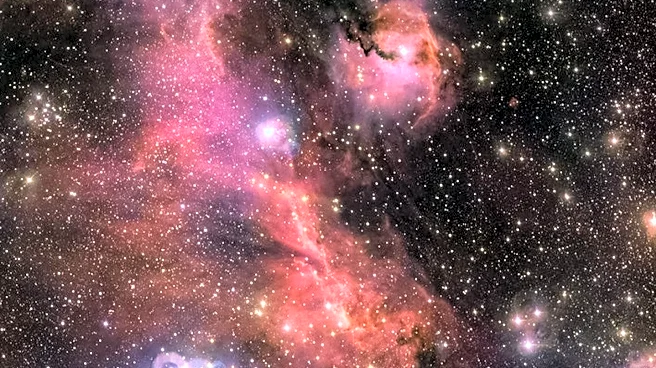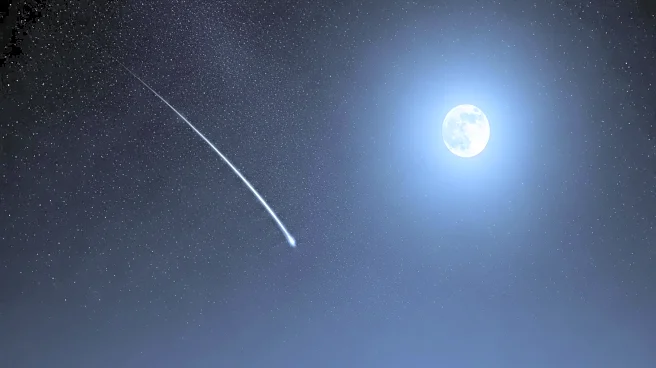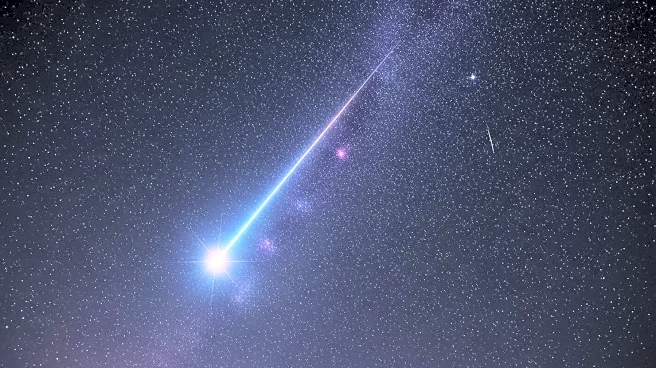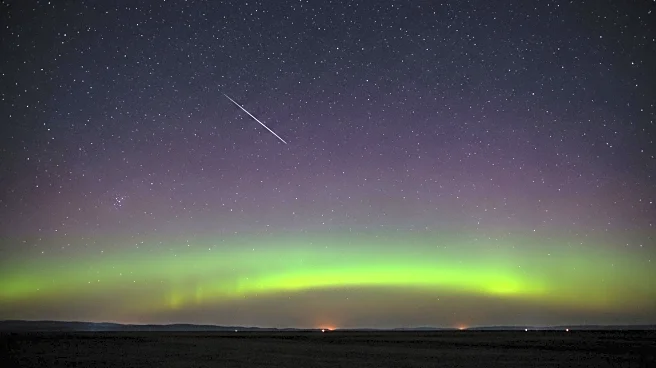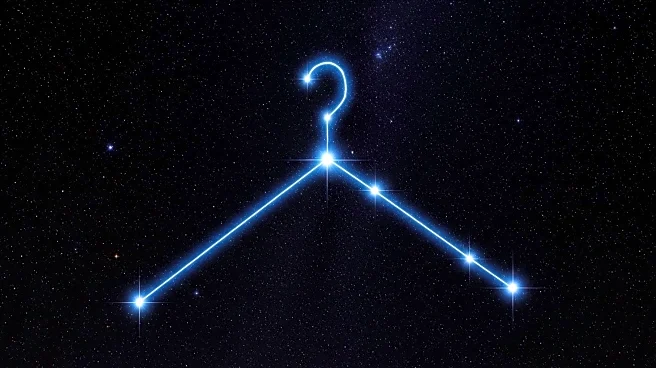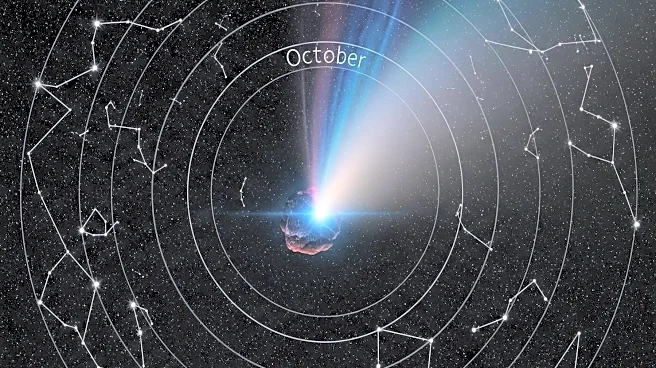What is the story about?
What's Happening?
The Coathanger, also known as Collinder 399, is an asterism located in the constellation Vulpecula the Fox. It is visible throughout most of the Northern Hemisphere's autumn. The asterism is named for its resemblance to a coathanger and is also referred to as Brocchi's Cluster and Al Sufi's Cluster. The Coathanger has a total integrated magnitude of 3.6, spread across a circle 1° in diameter, making it necessary to use binoculars for observation. The first recorded observation of this celestial object was by Persian astronomer Al Sufi in the 10th century, who included it in his Book of Fixed Stars. American amateur astronomer Dalmiro Francis Brocchi also contributed to its study by creating a map of the region in the 1920s, which helped astronomers calibrate their photometers. The Coathanger was later cataloged by Swedish astronomer Per Arne Collinder in 1931, although it is now understood that the stars are not physically related but merely appear in the same area of the sky.
Why It's Important?
Observing the Coathanger offers amateur astronomers a unique opportunity to engage with a historical and visually interesting celestial object. The asterism's visibility during autumn makes it accessible to a wide audience, encouraging interest in astronomy and the study of star patterns. The Coathanger's historical significance, having been documented by notable astronomers over centuries, adds educational value to its observation. This engagement can foster a deeper appreciation for the night sky and inspire further exploration of astronomy. Additionally, the Coathanger serves as a practical tool for calibrating photometers, contributing to the accuracy of astronomical measurements.
What's Next?
As the Coathanger remains visible throughout the autumn months, astronomy clubs and enthusiasts may organize observation sessions to share the experience with others. These sessions can provide educational opportunities, allowing participants to learn about the history and significance of the asterism. Observers may also explore other celestial objects in the vicinity, such as the Dumbbell Nebula, enhancing their understanding of the constellation Vulpecula. Continued interest in the Coathanger could lead to further studies on its individual stars and their characteristics, contributing to the broader field of astronomy.
Beyond the Headlines
The Coathanger's observation highlights the importance of preserving dark skies for astronomical study. Light pollution can hinder the visibility of such celestial objects, emphasizing the need for initiatives that protect and promote dark sky areas. The asterism also serves as a reminder of the interconnectedness of historical and modern astronomy, showcasing how past discoveries continue to influence current scientific practices. Encouraging public engagement with astronomy can lead to increased support for scientific research and education, fostering a culture of curiosity and exploration.
AI Generated Content
Do you find this article useful?
